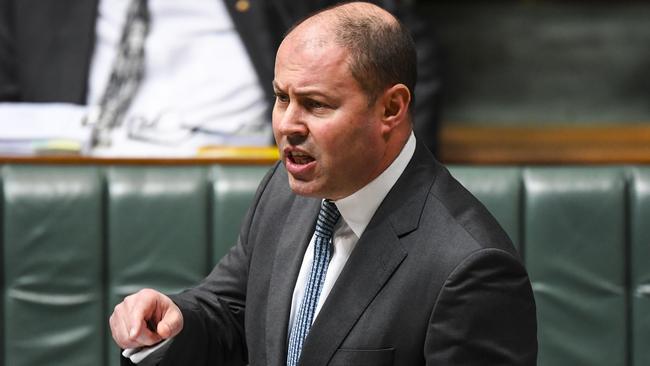Putting the bounce back in our step won’t come easy
Can our economy “spring back” to where we were in February or are we unavoidably headed to a different place? The answers depend largely on whether we get a dreaded “second wave” of COVID-19, writes Terry McCrann.
Terry McCrann
Don't miss out on the headlines from Terry McCrann. Followed categories will be added to My News.
The economy clearly bounced in May. The big question is whether it was real or the proverbial dead cat bounce.
There are two levels to the answer.
The first is how does the economy proceed if we are able to come out of the lockdowns relatively smoothly? Can we “spring back” to where we were in February or are we unavoidably headed to a different place?
Another way of putting that is do we get something akin to a “V-shaped” recovery or one that’s “U-shaped” or indeed more of a messy mix of “U and W-shaped”.
This is essentially a conventional economic question, albeit one posed in the most extraordinary and indeed utterly unprecedented circumstance of a government — indeed, virtually every government in the world — actually ordering their economies into recession.
That alone makes conventional economic analysis, how shall I say, complicated. Then throw in the other curve ball — all governments immediately embarked on massive countervailing stimulus.
This is, as I’ve characterised it, like someone slamming on the brakes and gunning the accelerator at the same time.
It would be a very odd way to drive a car and even more so with an entire economy.
It makes the outcome unpredictable; it does suggest that wherever we end up it won’t be quite like where we started from back in February.
Again, even that’s also before you try to factor in what will be different — like fewer international students and much fewer foreign tourists.
All this is the (relatively) easy bit.

The second level to the complex swirling answer is what happens if we don’t come out of the lockdowns smoothly.
What happens if we do get the dreaded “second wave”.
Obviously that immediately raises two big questions that cannot be answered ahead of time or even game-planned: how bad is such a second wave, and how do governments respond?
The worst-case outcome — a serious wave and a return to total or near-total lockdown — would be catastrophic. Fortunately, it’s also the least likely outcome.
The two sets of official statistics that captured what happened in May were the jobs and jobless numbers on Thursday and preliminary numbers on retail sales on Friday.
The very tardiness of the jobs numbers — they covered what the state of play was all the way back and only in the first two weeks of May — was actually a huge plus for this assessment.
The fact that they were fundamentally distorted by especially the impact of JobKeeper but also their own analytical process didn’t detract from their usefulness in this context.
Whether you take the ABS’s official jobless number of (the ludicrous) 7.1 per cent, or my estimate of at least
20 per cent, they both suggest the economy hit rock-bottom in those first two weeks.
This is confirmed by the much more accurate and far more timely jobs and jobless data from Roy Morgan Research.
Morgan was able to tell us fully two weeks before the ABS not only that its measure of the jobless was 14.8 per cent in May, but also, that was for all of May, not just the ABS’s first two weeks of the month.
The Morgan measure is, again, a different one to my estimate of the real level of jobless, which tries to include those that would have been sacked but for JobKeeper, and is far more meaningful than the official ABS one.

The really encouraging indication in the Morgan numbers was that the jobless rate fell ever so slightly from April to May. That suggested to me that jobs picked up quite sharply from the first half to the second half of May.
This was supported by the retail sales numbers the next day. Indeed, they all but announced not only that we were having a “V-shaped” recovery but that we had already had it!
The ABS said the preliminary data showed that retail sales, after falling by the largest percentage ever of 17.7 per cent in April, had then leapt by the largest percentage ever, at 16.3 per cent in May.
First the brake, then the accelerator.
That might suggest that we were almost back to where we started from in March. However, percentages can be deceptive: May was still 4.3 per cent below March.
Even so, that would be most of the second side of the “V” and, looking longer-term, May sales were up 5 per cent over May 2019.
Now, retail sales are only one, if a significant, part of the economy. But they did show that May and especially the second half of the month picked up significantly from April. We did bounce.
We are now in the lap of the gods as to where we head over the next few months. After that it will be up to us to carve our longer-term future.
Originally published as Putting the bounce back in our step won’t come easy


